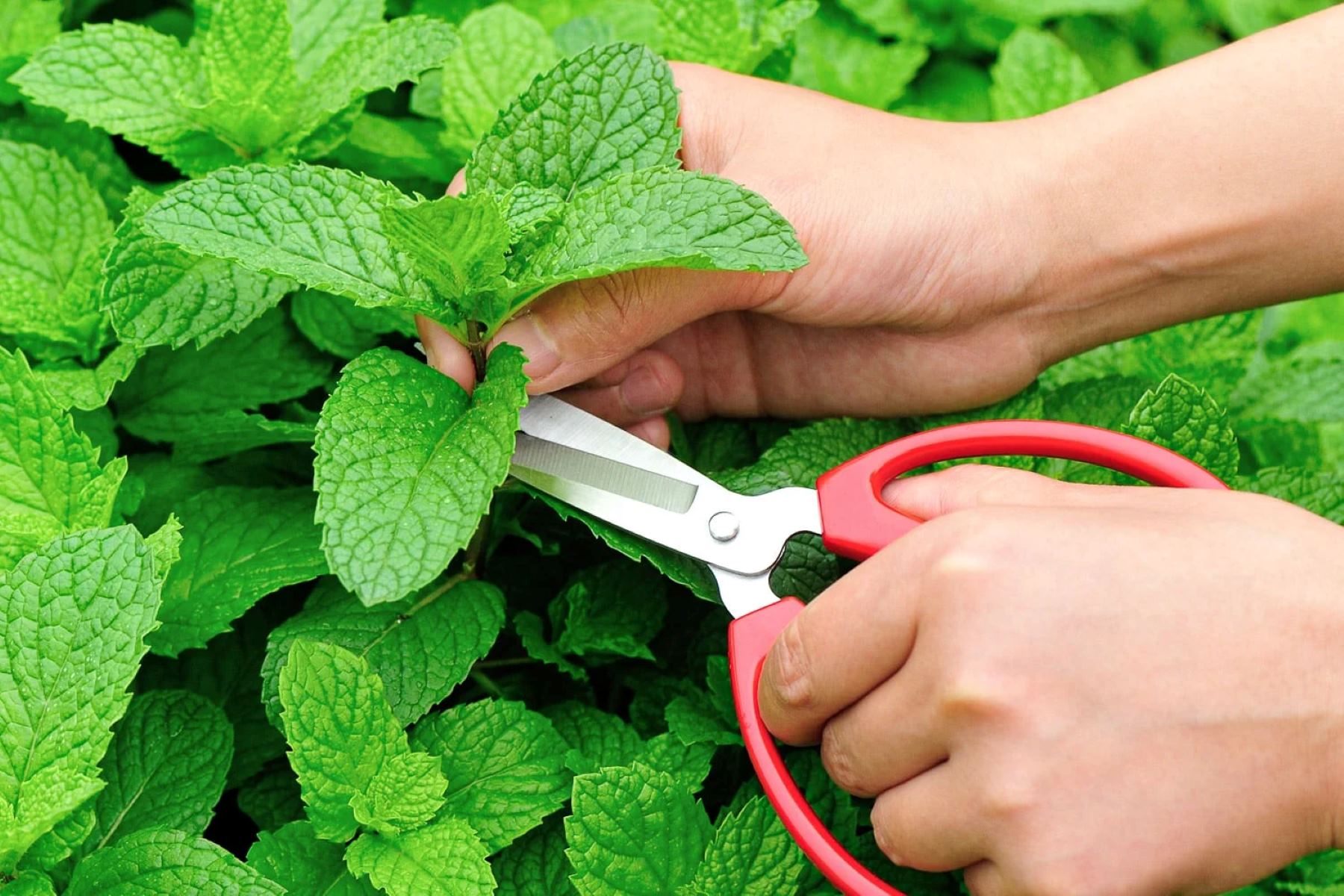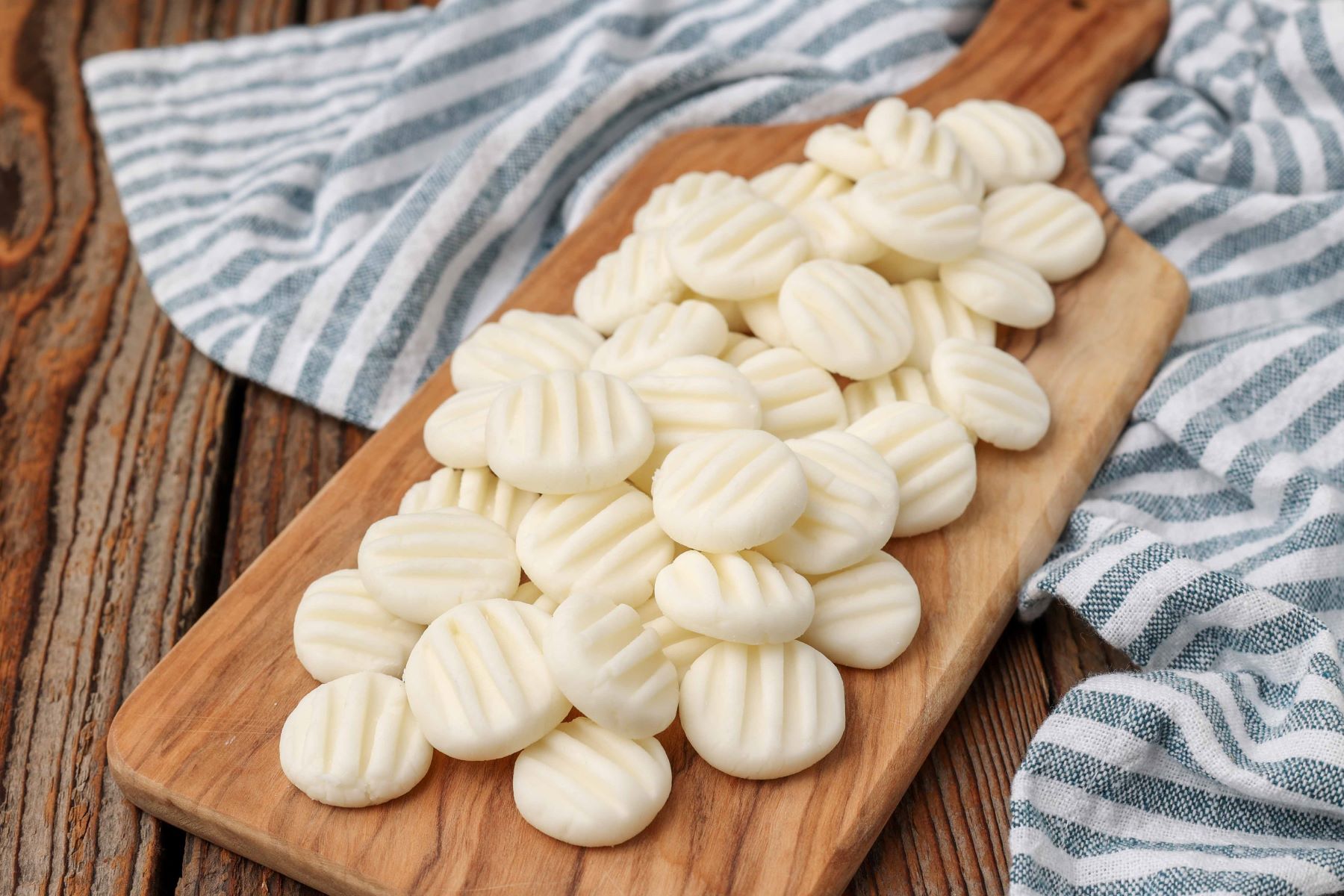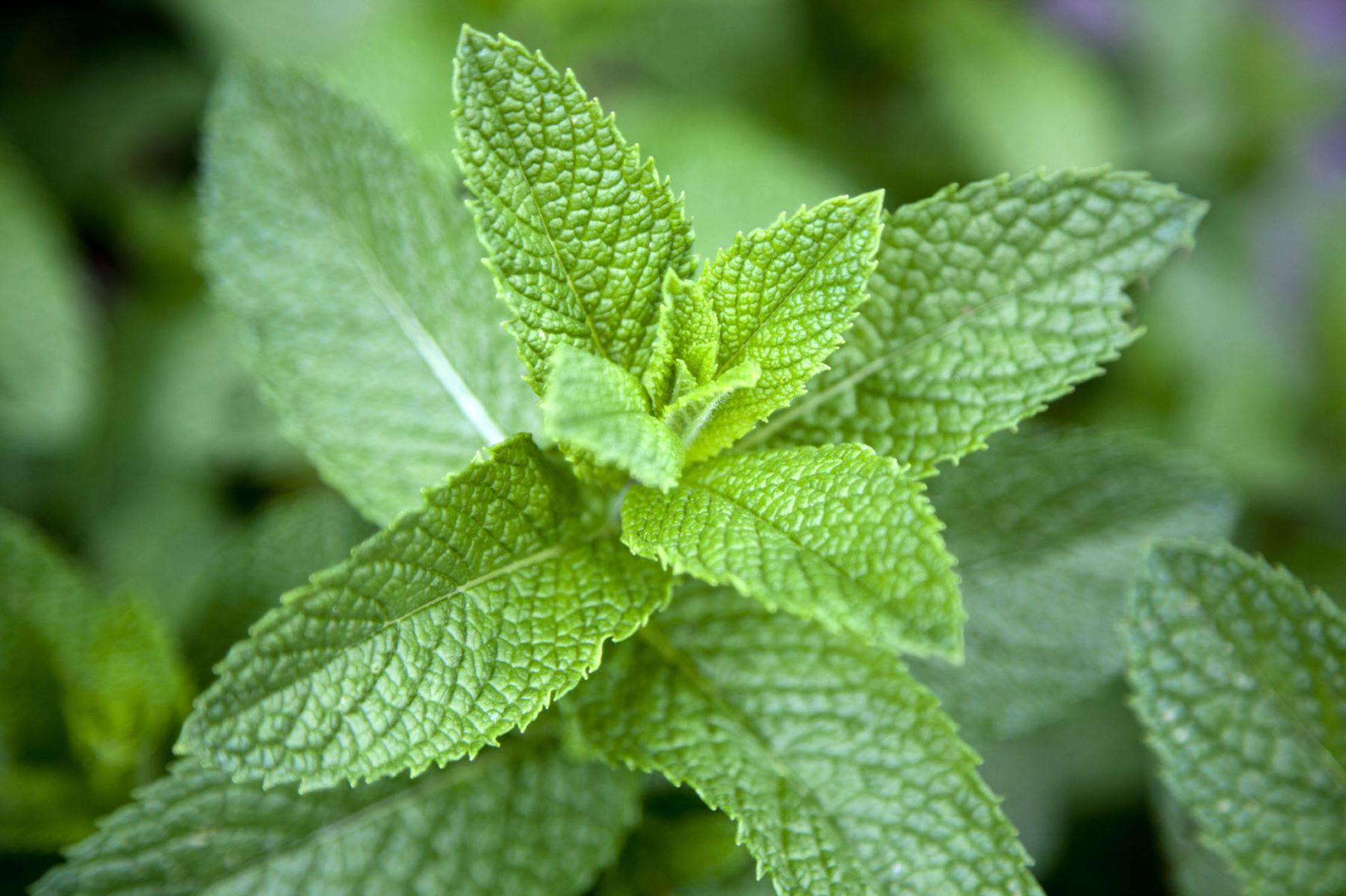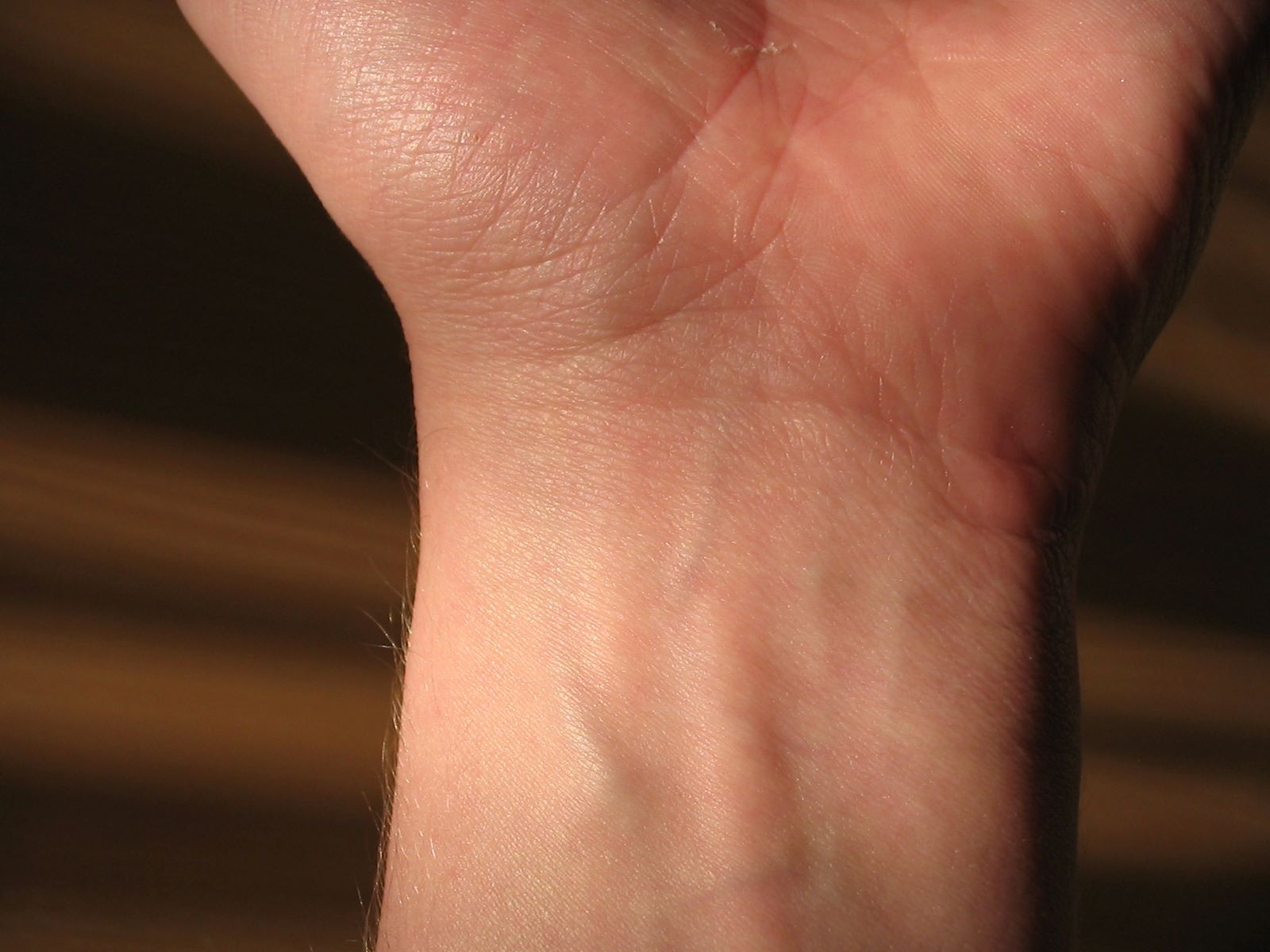Home>Food and Cooking>The Secret To Picking Mint Leaves For Continuous Growth


Food and Cooking
The Secret To Picking Mint Leaves For Continuous Growth
Published: January 18, 2024
Learn the secret to picking mint leaves for continuous growth with our expert tips. Elevate your food and cooking experience with fresh, homegrown ingredients.
(Many of the links in this article redirect to a specific reviewed product. Your purchase of these products through affiliate links helps to generate commission for Regretless.com, at no extra cost. Learn more)
Table of Contents
Introduction
Mint, with its refreshing aroma and versatile uses, is a beloved herb in the culinary world. Whether it's adding a zing to beverages, garnishing a delectable dish, or infusing a delightful fragrance into homemade products, mint is a staple in many households. However, the secret to enjoying a bountiful supply of fresh, flavorful mint lies in understanding the art of picking its leaves for continuous growth.
Aspiring gardeners and cooking enthusiasts alike often find themselves pondering the optimal approach to harvesting mint leaves without hindering the plant's vitality. This article aims to unravel the mystery behind this process, offering valuable insights into the best practices for picking mint leaves to ensure the plant's sustained abundance.
By delving into the intricacies of mint growth, exploring the ideal timing for harvesting, and unveiling effective techniques for plucking the leaves, this guide will equip readers with the knowledge to nurture their mint plants and enjoy an endless supply of this aromatic herb. Furthermore, we will delve into the essential post-harvest care tips to promote the plant's regrowth and longevity, ensuring a thriving mint garden for the long haul. So, let's embark on this journey to unlock the secrets of picking mint leaves for continuous growth and elevate our culinary and gardening endeavors to new heights.
Understanding Mint Growth
Mint, a member of the Lamiaceae family, is a resilient perennial herb renowned for its rapid growth and ability to thrive in various conditions. Understanding the growth patterns of mint is crucial for effectively harvesting its leaves while ensuring the plant's continuous vitality.
Mint exhibits vigorous growth, characterized by its tendency to spread rapidly through underground rhizomes. This aggressive growth habit enables mint to propagate vigorously, often necessitating containment measures in garden settings. Furthermore, mint's prolific nature makes it a resilient herb, capable of regenerating after being harvested, provided that the proper techniques are employed.
The growth cycle of mint typically begins in spring, as the plant emerges from dormancy and embarks on a phase of active growth. During this period, mint plants produce an abundance of fresh, tender leaves, which are highly sought after for culinary and aromatic purposes. As the growing season progresses, mint continues to develop new foliage, often yielding multiple harvests throughout the warmer months.
In terms of growing conditions, mint thrives in moist, well-drained soil and prefers partial to full sunlight. However, it is adaptable and can tolerate a range of light and soil conditions, making it a versatile addition to diverse garden landscapes. Additionally, mint's resilience extends to its ability to withstand occasional neglect, making it an ideal choice for novice gardeners seeking low-maintenance herbs.
Understanding the growth habits of mint also involves recognizing the importance of pruning and harvesting practices. Regular pruning not only promotes bushier growth but also encourages the emergence of fresh shoots and leaves. When harvesting mint leaves, it is essential to do so strategically, ensuring that adequate foliage remains on the plant to sustain its growth and vitality.
By comprehending the intricacies of mint growth, including its rapid spread, seasonal development, and adaptable nature, individuals can cultivate a deeper appreciation for this aromatic herb. Armed with this knowledge, gardeners and enthusiasts can approach the task of picking mint leaves with a heightened understanding of the plant's resilience and capacity for continuous growth.
The Best Time to Pick Mint Leaves
The optimal timing for harvesting mint leaves plays a pivotal role in ensuring the plant's sustained growth and productivity. As a herb renowned for its rapid regrowth and prolific nature, mint presents an intriguing challenge when it comes to determining the best time for leaf picking.
The ideal time to pick mint leaves is during the early stages of the plant's growth, typically before it reaches the flowering phase. This stage, characterized by tender, vibrant foliage, is when mint leaves boast their peak flavor and aroma. Harvesting the leaves at this juncture not only guarantees superior quality but also encourages the plant to generate fresh growth, promoting a continuous supply of flavorful leaves.
Furthermore, harvesting mint leaves before the plant flowers helps prevent the onset of bitterness, which can occur as the plant progresses towards its reproductive phase. By picking the leaves early, individuals can savor the full, unadulterated essence of mint, free from the potential bitterness that may arise as the plant matures.
In terms of the growing season, the best time to pick mint leaves is during the early to mid-morning, when the dew has evaporated, and the sun's warmth has yet to intensify. This timeframe is conducive to harvesting as the leaves are at their freshest, retaining maximum moisture and flavor. Additionally, picking mint leaves in the morning allows the plant to recover and rejuvenate throughout the day, promoting robust regrowth and vitality.
It is important to note that mint leaves can be harvested multiple times throughout the growing season, provided that the plant is not depleted excessively. Regular, strategic harvesting encourages the emergence of new shoots and leaves while preventing the plant from becoming overly woody or leggy. By adopting a mindful approach to picking mint leaves, individuals can harness the plant's regenerative capacity, ensuring a continuous abundance of fresh, aromatic foliage.
In essence, the best time to pick mint leaves aligns with the plant's early growth phase, prior to flowering, and preferably during the early hours of the day. By adhering to these guidelines, individuals can harness the full potential of their mint plants, relishing an ongoing supply of flavorful leaves while nurturing the plant's sustained growth and vitality.
Techniques for Picking Mint Leaves
Picking mint leaves is an art that requires precision and finesse to ensure the plant's continuous growth and productivity. Employing the right techniques not only facilitates the harvesting process but also promotes the development of fresh foliage, sustaining a thriving mint garden. Here are several effective techniques for picking mint leaves:
-
Selective Plucking: When harvesting mint leaves, it is crucial to adopt a selective approach, targeting mature, fully developed leaves while leaving the smaller, emerging foliage intact. This selective plucking method allows the plant to retain its capacity for photosynthesis and sustains its growth potential. By carefully choosing which leaves to harvest, individuals can encourage the emergence of new shoots and maintain the plant's overall vigor.
-
Pinching Method: Utilizing the pinching method involves snipping or pinching off individual leaves or clusters of leaves at the stem. This technique promotes bushier growth and encourages the development of lateral shoots, leading to a denser, more abundant foliage. When employing the pinching method, it is advisable to pinch just above a set of leaves or nodes, stimulating the plant to produce fresh growth from the point of pruning.
-
Avoiding Stems: When picking mint leaves, it is essential to avoid stripping the plant of its stems entirely. Instead, focus on harvesting the leaves while leaving a portion of the stem intact. This practice ensures that the plant retains its structural integrity and facilitates the regrowth of new leaves from the remaining stems. By exercising care and precision in leaf picking, individuals can maintain the plant's overall health and vitality.
-
Gentle Handling: Handling mint plants with gentleness and care during the harvesting process is paramount. Tugging or pulling forcefully at the leaves can damage the delicate stems and compromise the plant's regrowth potential. By gently grasping the base of the leaf and using a swift, controlled motion to pluck it from the stem, individuals can minimize stress on the plant and promote a seamless recovery.
-
Regular Harvesting: Engaging in regular, consistent harvesting of mint leaves is key to sustaining the plant's growth and productivity. By routinely picking mature leaves, individuals can prevent the plant from becoming overly woody or leggy, encouraging the emergence of fresh foliage. This practice also helps maintain the plant's compact, vigorous growth habit, ensuring a continuous supply of flavorful leaves.
Incorporating these techniques into the process of picking mint leaves empowers individuals to nurture their plants effectively while reaping the rewards of a flourishing mint garden. By embracing selective plucking, employing the pinching method, avoiding excessive stem removal, handling the plant with care, and practicing regular harvesting, enthusiasts can unlock the secret to continuous growth and abundant foliage, enhancing their culinary and aromatic pursuits.
Caring for Mint After Picking
After the meticulous process of picking mint leaves, it is imperative to provide post-harvest care to ensure the plant's continued vigor and prolific growth. Caring for mint after picking involves implementing nurturing practices that support the plant's recovery and encourage the regeneration of fresh foliage. By attending to the plant's needs following the harvest, individuals can foster a resilient and abundant mint garden.
One of the fundamental post-picking care measures for mint involves watering the plant appropriately. Following the harvest, it is essential to provide the mint with adequate moisture to support its recovery process. While maintaining moist, well-drained soil is crucial for mint's overall health, it is especially beneficial after harvesting to aid the plant in replenishing its resources and initiating new growth. However, it is important to avoid overwatering, as excessive moisture can lead to root rot and compromise the plant's vitality.
In addition to watering, applying a balanced fertilizer after picking mint leaves can bolster the plant's recovery and stimulate fresh foliage production. A gentle application of a suitable fertilizer, rich in essential nutrients, provides the mint plant with the nourishment it needs to rebound from the harvesting process and embark on a phase of robust regrowth. By supplementing the soil with nutrients, individuals can fortify the plant's resilience and promote the emergence of tender, flavorful leaves.
Furthermore, post-harvest care for mint entails monitoring the plant for any signs of stress or pest infestations. Inspecting the mint plant after picking its leaves allows individuals to identify and address any potential issues promptly, safeguarding the plant's well-being. By remaining vigilant and responsive to the plant's needs, individuals can mitigate stressors and ensure that the mint can channel its energy into generating new growth, thereby sustaining its continuous productivity.
Pruning the mint plant after harvesting its leaves is another essential aspect of post-picking care. Trimming back any leggy or overgrown stems not only promotes a more compact and vigorous growth habit but also encourages the development of fresh shoots and leaves. Pruning enables the plant to allocate its resources efficiently, fostering the regeneration of lush foliage and maintaining an abundant supply of aromatic leaves for culinary and aromatic endeavors.
In essence, caring for mint after picking involves providing the plant with the necessary resources, monitoring its well-being, and facilitating its recovery and regrowth. By tending to the plant's hydration, nourishment, pest management, and pruning needs following the harvest, individuals can empower their mint plants to thrive and flourish, ensuring a continuous abundance of fresh, aromatic foliage for their culinary and aromatic pursuits.
Conclusion
In conclusion, the art of picking mint leaves for continuous growth encapsulates a delicate balance between harvesting the plant's foliage for culinary and aromatic purposes while nurturing its sustained vitality. By gaining a deeper understanding of mint's growth patterns, the optimal timing for leaf picking, and the techniques for harvesting, individuals can harness the plant's regenerative capacity and enjoy an endless supply of fresh, aromatic leaves.
The journey of picking mint leaves begins with comprehending the plant's vigorous growth habits, resilient nature, and adaptability to various growing conditions. Armed with this knowledge, individuals can approach the task of harvesting mint leaves with a newfound appreciation for the plant's resilience and capacity for continuous productivity.
Delving into the best time to pick mint leaves unravels the significance of harvesting the foliage before the plant reaches the flowering stage, ensuring peak flavor and aroma while averting potential bitterness. By aligning the leaf-picking process with the plant's early growth phase and selecting the optimal harvesting timeframe, individuals can savor the full essence of mint while nurturing the plant's sustained growth and vitality.
Furthermore, mastering the techniques for picking mint leaves, including selective plucking, employing the pinching method, and practicing regular harvesting, empowers individuals to sustain the plant's vigorous growth and maintain an abundant supply of flavorful foliage. By embracing these techniques, enthusiasts can unlock the secret to continuous growth, fostering a thriving mint garden for their culinary and aromatic pursuits.
Moreover, providing post-harvest care to mint plants, encompassing watering, fertilization, pest management, and pruning, is instrumental in supporting the plant's recovery and stimulating fresh foliage production. By tending to the plant's needs following the harvest, individuals can fortify their mint plants' resilience, ensuring a continuous abundance of fresh, aromatic leaves for their culinary and aromatic endeavors.
In essence, the journey of picking mint leaves for continuous growth intertwines the art of harvesting with the nurturing of the plant's vitality. By embracing the nuances of mint growth, mastering the art of leaf picking, and providing attentive post-harvest care, individuals can cultivate a flourishing mint garden, replete with an endless supply of fresh, aromatic foliage. This journey not only enriches culinary and aromatic experiences but also fosters a deeper connection with the resilient and bountiful nature of the magnificent mint plant.














